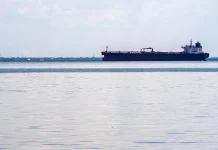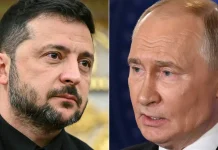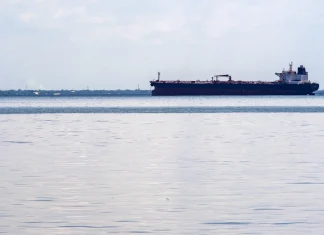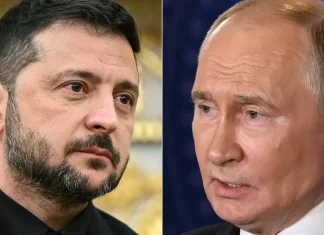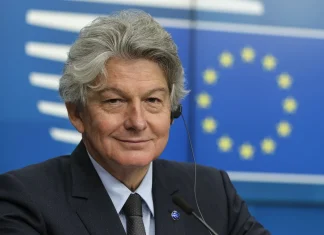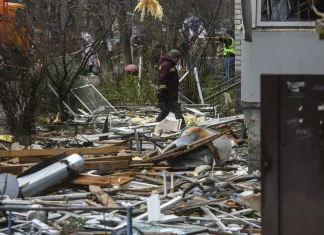
Under the Shadow of Tension: Kim Jong Un’s Missile Tests and the Unfolding Drama on the Korean Peninsula
As dawn breaks over the Korean Peninsula, the air crackles with an uneasy tension that feels all too familiar. North Korea’s enigmatic leader, Kim Jong Un, has once again seized the spotlight—not with rhetoric alone, but through the thunderous roar of missile launches that paint the sky with ominous streaks of defiance. According to North Korea’s own Korean Central News Agency (KCNA), the Supreme Leader recently oversaw the test-firing of two newly developed air defence missiles, a move that escalates the ongoing standoff with South Korea and ripples far beyond the peninsula’s divided border.
These tests are more than just displays of military might—they are acts steeped in symbolic power and political signaling. Kim Jong Un stands at the helm, an unwavering figure framed by binoculars and military advisors, digesting data and guiding a defense strategy that his regime describes as “unique and special technology.” Yet, the details remain shrouded in mystery. What exactly are these weapons, and how will they reshape the fragile balance between the two Koreas?
Missiles in the Spotlight: A Glimpse into Pyongyang’s New Arsenal
The report from KCNA is succinct yet loaded with implications. The two air defence missile systems are claimed to possess “superior combat capability,” engineered particularly to neutralize varied aerial threats like drones and cruise missiles. Released photographs show the fiery trails of missiles piercing the sky and intercepted projectiles flames in mid-air—a visual narrative of power and precision. But no exact location of the tests was disclosed, leaving analysts and observers piecing together clues in the shadow play of secrecy that cloaks North Korea’s military developments.
One military official described the missiles’ capabilities to the regime’s leader as both technologically advanced and strategically crucial. An “important task” has been issued for the homeland’s defence science sector, signaling an urgent push ahead of a forthcoming key party meeting. This is not merely a local military exercise; it’s a calibration of strength meant to send a message, both internally to loyalists and externally to adversaries.
Tensions Flare at the Border: South Korea’s Warning Shots
Meanwhile, the delicate border between North and South Korea remains a hotbed of volatility. Just days before the missile tests, South Korean forces fired warning shots in response to thirty North Korean soldiers crossing over into the highly fortified demilitarized zone. The incident was no random misstep. According to Army Lieutenant General Ko Jong Chol, it was a “premeditated and deliberate provocation,” a calculated move to stoke tensions further.
South Korea’s military officials warn of the latent dangers embedded in these provocations. “This is a very serious prelude that could spiral the southern border into an uncontrollable phase,” General Ko warned, underscoring how a flashpoint here could escalate into a broader conflict with far-reaching consequences.
Learning from Ukraine: North Korea’s Military Evolution
To understand North Korea’s recent military advancements, one must look beyond the peninsula. International analysts point to the influence of Russia’s ongoing war in Ukraine, from which Pyongyang is drawing hard-earned lessons.
“The North is clearly bolstering air defence capabilities, focusing on countering low-altitude drones and cruise missiles,” says Hong Min, a senior analyst at the Korea Institute for National Unification. “This reflects a calculated response informed by observing the realities of modern warfare played out in Ukraine.”
Reports indicate that North Korea has sent upwards of 10,000 troops, alongside artillery and missile systems, to support Russian forces, mainly around the strategic Kursk region. This brutal engagement has come at a high cost, with South Korean intelligence estimating that about 600 North Korean soldiers have died and thousands more wounded on the frontlines. It’s a grim reminder of how the peninsula’s conflict has evolved into a wider global entanglement.
Bridging Divides or Deepening Scars? The Complex Dance of Diplomacy
The current political landscape is a mosaic of fractured intentions and unresolved old wounds. South Korea’s new president, Lee Jae Myung, has expressed a willingness to reset relations with the North. Lee has spoken passionately about building “military trust” between the neighbors, hopeful that dialogue might skirt the precipice of hostility.
Yet, Pyongyang remains unwaveringly dismissive. Instead of reciprocating with openness, it continues to erect walls—literal and metaphorical—through military displays and pointed condemnations of Seoul’s actions. The contradictory dance of peace overtures and aggressive posturing invites us to ponder the complexities of diplomacy with a regime that often speaks through missiles and military might.
What the Future Holds: A Call to Reflect
For global observers, the chilling spectacle of missile tests and border skirmishes is more than a regional squabble; it is a nexus point where international security, technological evolution, and political will collide. The stakes could not be higher as North Korea advances its military capabilities, even as the world watches uneasy, caught between fear and the faint hope for resolution.
What do these developments tell us about the nature of modern conflict? How might advancements in drone and missile technology reshape not only the Korean Peninsula but the future of warfare worldwide? And critically, how can the international community engage with a defiant North Korea that appears to draw strength from confrontation rather than conciliation?
In the end, the story unfolding here is not just about missiles or soldiers. It is a deeply human saga of power, fear, and aspiration—of leaders and ordinary people caught in the shadow of a divided country. As Kim Jong Un watches the skies light up with his latest creations, the rest of the world must grapple with the very real consequences of a peninsula on edge, wondering: what path forward remains?
In the Words of the Peninsula
Kim Hyun-soo, a resident of Seoul, shared a sentiment that echoes across the border: “Every time I hear about missile tests or border incidents, I think about the children growing up with this fear. Will they ever know peace?”
Meanwhile, Professor Lee Min-jae, an expert on North Korean military affairs, cautions, “The missile tests are more than just shows of strength—they are signals to multiple audiences. Understanding those signals is essential if we hope to navigate this tense moment.”
As tensions simmer and preparations for another pivotal party meeting unfold in Pyongyang, one question lingers for all who follow this unfolding story: can we envision a future where the thunder of missiles is replaced by the quiet hope of peace?


